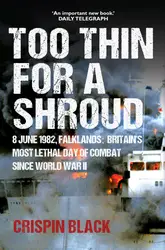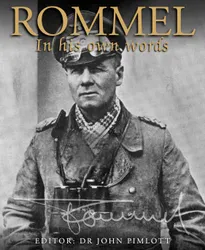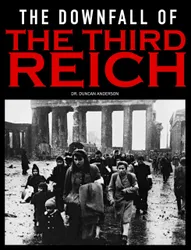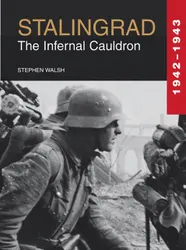In the summer of 1940, the most important battle in the history of air warfare was fought between the British Royal Air Force and the German Luftwaffe in the skies over southern Britain. Only after a tightly-fought series of aerial battles did the RAF secure a narrow victory – or did it? Although glamourised by the press and cinema alike over the past 60 years, the battle was an intense war of attrition in which luck, skill, judgement and bravery all played a role. The Battle of Britain explores in detail the men, machines and tactics engaged in the epic struggle, and seeks to debunk some of the popular myths that surround it. The book examines the strength of both sides on the eve of the battle, and its wider strategic implications fo the outcome of the war, before looking at the German preparations for invasion, and the Luftwaffe's state of readiness after the Polish and French campaigns. It explains why the battle was a race against time for the Germans and highlights factors such as the lack of suitable transports and inexperience in planning a seaborne invasion that helped hinder their efforts. The book also asks whether Hitler himself was ever truly committed to invading Britain. Britain's preparations for defending herself from attack are also closely examined. The role and effectiveness of such institutions as the Home Guards and Observer Corps are covered, as well as the vital Chain Home and Chain Home Low radar networks. The Battle of Britain analyses the RAF's preparations for the battle, its main fighters, the Hurricane and the Spitfire, and the vital importance of pilots from the Commonwealth, Poland, Czechoslovakia, France, the United States and elsewhere. The Battle of Britain covers every stage of this mammoth contest in detail, beginning with the opening attacks on British shipping and ports. The book highlights how close the war of attrition against the RAF came to succeeding, when the full fury of the Luftwaffe was unleashed on its airfields. It also asks why the Luftwaffe began bombing the cities when it was so close to success. The failings of both sides are dissected: the discord between key RAF commanders, and the initial failure of the Germans to realise the importance of radar. Superbly illustrated with both full-colour artworks of the aircraft (including some three-view artworks), as well as colour and black-and-white photographs, and a detailed appendix on squadron and aircraft service history, The Battle of Britain provides an outstanding account of the conflict.
Kom igång med den här boken idag för 0 kr
- Få full tillgång till alla böcker i appen under provperioden
- Ingen bindningstid, avsluta när du vill
Författare:
Serie:
Military ClassicsSpråk:
Engelska
Format:
River of Fire : The Clydebank Blitz
John MacLeod
bookChildren of the Troubles : Our Lives in the Crossfire of Northern Ireland
Laurel Holliday
bookLife and Death in the Battle of Britain
Carl Warner
bookThe Year that Changed the World : The Untold Story Behind the Fall of the Berlin Wall
Michael Meyer
bookProsperity : God Has Provided Prosperity for Every Home
Charles Fillmore
bookToo Thin for a Shroud : The Last Untold Story of the Falklands War
Crispin Black
bookThe Blitz : The British Under Attack
Juliet Gardiner
audiobookCall Sign Dracula
Joe Fair
audiobookPaul Simon : The Life
Robert Hilburn
audiobookbookFalklands War Heroes : Extraordinary true stories of bravery in the South Atlantic
Michael Ashcroft
bookDecoy
audiobookBrian May
Maggie Lee
audiobook
Rommel : In his own words
John Pimlott
bookSS: Hitler's Foreign Divisions : Foreign Volunteers in the Waffen-SS 1940-45
Chris Bishop
bookFall of the Reich : D-Day, Arnhem, Bulge and Berlin
Duncan Anderson, Lloyd Clark
bookThe Marine Corps : Three Centuries of Glory
B L Crumley
bookThe Gestapo : A History of Hitler's Secret Police 1933-45
Rupert Butler
bookChurchill : A History
Brenda Ralph Lewis
bookThe Sniper at War : From the American Revolutionary War to the Present Day
Mike Haskew
bookStalingrad 1942–1943 : The Infernal Cauldron
Stephen Walsh
bookThe World's Great Tanks : From 1916 to the Present Day
Roger Ford
bookThe Survival Handbook : Learn the survival skills of the world's elite forces
Peter Darman
bookThe Vietnam War
Chris McNab, Andrew Wiest
book























